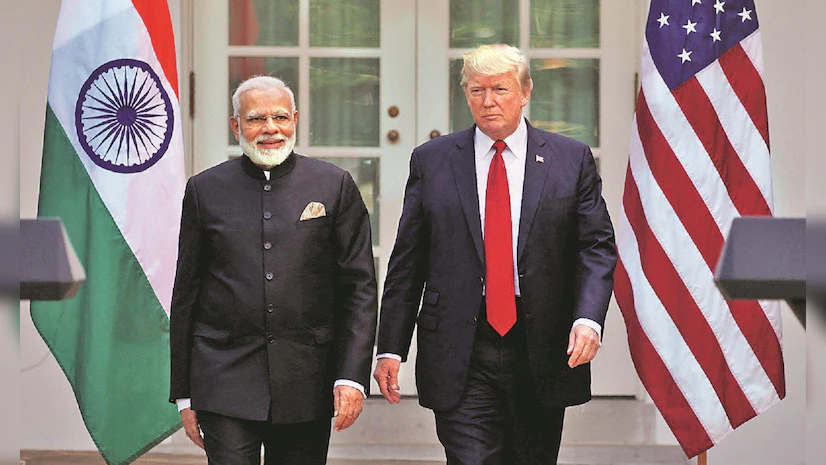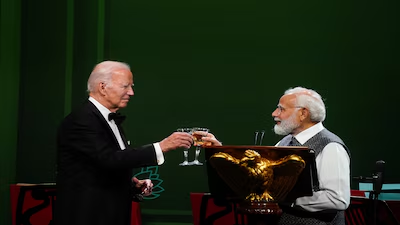


Indian Prime Minister Narendra Modi’s visit to the United States from February 12 to 13, 2025, marks a significant moment in Indo-U.S. relations. This high-profile visit comes at a crucial time, as both nations seek to deepen their strategic, economic, and technological partnerships. The visit includes key discussions with U.S. President Donald Trump, focusing on defense, trade, immigration, and geopolitical stability. Modi’s trip underscores the growing importance of India on the global stage and highlights the shared interests between the world’s two largest democracies.
The bilateral relationship between India and the U.S. has strengthened over the years, with cooperation in sectors like defense, technology, and energy. Modi’s visit aims to further cement these ties and open new avenues for collaboration. Given the changing global dynamics, particularly in the Indo-Pacific region, the discussions are expected to address China’s influence, global security challenges, and ways to enhance trade between the two nations. Below are five key aspects of this important visit.
1. Strengthening Strategic and Defense Ties
Defense cooperation has been one of the strongest pillars of Indo-U.S. relations. During this visit, both leaders are expected to sign new defense agreements, enhancing military collaboration and technology sharing. The U.S. has emerged as one of India’s largest defense partners, providing advanced military equipment, including fighter jets, drones, and missile systems. Joint military exercises like Malabar have further solidified the partnership, ensuring a free and open Indo-Pacific. Strengthening these ties is vital for both nations, especially considering growing tensions in the South China Sea and the rise of new security threats in the region.
In addition to military hardware, India and the U.S. are expected to discuss intelligence-sharing mechanisms and counter-terrorism strategies. Both countries face security challenges from extremist groups, and cooperation in this field can help mitigate threats. Cybersecurity and space defense are also likely to be on the agenda, as India expands its capabilities in these areas. The visit is expected to result in deeper collaboration in intelligence operations, cybersecurity, and defense technology, enhancing India’s defense infrastructure and boosting its strategic position in Asia.
2. Boosting Trade and Economic Cooperation
Trade has been a contentious issue between India and the U.S., with disagreements over tariffs, market access, and intellectual property rights. Modi’s visit aims to resolve trade disputes and establish a more balanced economic relationship. India is one of the fastest-growing economies, and American companies see it as a lucrative market. Discussions are expected to focus on reducing trade barriers, improving investment opportunities, and ensuring a fair business environment for both Indian and American companies.
Additionally, Modi’s visit will emphasize India’s growing role in global supply chains. With the U.S. looking to reduce its dependence on China, India has positioned itself as an alternative manufacturing hub. The “Make in India” initiative aligns with U.S. interests in diversifying global trade networks. Investment in emerging technologies, such as artificial intelligence and semiconductor manufacturing, is also likely to be a key discussion point. Strengthening economic ties will benefit both nations, creating new jobs and fostering innovation.
3. Cooperation in Energy and Climate Change
Energy security is another crucial aspect of Modi’s visit. The U.S. has become a major energy supplier to India, particularly in liquefied natural gas (LNG) and crude oil. Strengthening energy partnerships will help India diversify its energy sources and reduce dependence on the Middle East. Modi’s discussions with American leaders will focus on expanding energy trade, investing in renewable energy projects, and enhancing cooperation in nuclear energy.
Climate change remains a shared concern for both nations. India has set ambitious renewable energy targets, and collaboration with the U.S. can accelerate the transition to clean energy. Joint initiatives on solar power, wind energy, and sustainable infrastructure development will be discussed. Additionally, technology transfer in electric vehicles, hydrogen energy, and battery storage systems will help India meet its climate goals while creating new economic opportunities.
4. Advancing Technology and Space Exploration
Additionally, India and the U.S. share a strong relationship in technology and innovation, with collaborations in IT, telecommunications, and space research. Modi’s visit is expected to enhance cooperation in emerging technologies such as artificial intelligence, 5G, and quantum computing. With India emerging as a major technology hub, strengthening these ties will benefit both countries, fostering innovation and research collaborations.
Space exploration is another area of growing interest. The Indian Space Research Organisation (ISRO) and NASA have worked together on several missions, including the NISAR satellite project. Modi’s visit may lead to new agreements in space exploration, lunar research, and satellite technology. As India advances its space ambitions, cooperation with the U.S. will help accelerate technological advancements and strengthen India’s position in the global space industry.
5. Addressing Immigration and People-to-People Ties
One of the key topics of discussion during Modi’s visit will be immigration policies, particularly regarding H-1B visas. The U.S. is home to a large Indian diaspora, and many Indian professionals contribute to the American economy, especially in the tech and healthcare sectors. Modi is expected to advocate for favorable visa policies to ensure smooth mobility for Indian workers and students.
The visit will also highlight the importance of cultural and educational exchanges between the two nations. Thousands of Indian students pursue higher education in the U.S., and strengthening academic ties will benefit both countries. People-to-people connections are a crucial element of India-U.S. relations, fostering mutual understanding and collaboration in various fields.
Conclusion
Prime Minister Modi’s U.S. visit marks another step in strengthening the strategic partnership between India and the United States. With discussions covering defense, trade, energy, technology, and immigration, this visit is expected to yield significant agreements that will shape the future of Indo-U.S. relations. As both countries navigate global challenges, their collaboration will be key to ensuring economic growth, security, and innovation. Modi’s visit reflects India’s growing influence on the world stage and highlights the strong bond between the two democracies.
Buy Domin and Hosting with our trusted websites
https://www.hostinger.in/
https://www.bluehost.com/
Visit our Website
https://spotself.com/




Leave a Reply